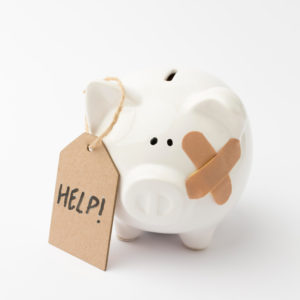
A Strategic Guide to Building an Emergency Fund
Navigating the world of personal finance can prove challenging. Unexpected financial setbacks, such as car maintenance or medical bills, can quickly disrupt your financial stability, even when you believe that everything is going well. Fortunately, there are strategies for reducing the stress associated with unforeseen debts, so you can be prepared for whatever comes your way. The emergency fund is one of the primary strategies that we advise setting up. This procedure reduces the effects of unexpected financial difficulties by acting as a safety net. Although the idea of increasing your emergency fund may seem overwhelming, you can make the process advantageous by taking a proactive and well-thought-out strategy. It doesn’t have to take forever to build your fund, especially if you plan it properly. So, here is an idea:
Break Down The Challenge
When you look at the task as a whole, it can seem pretty impossible. So, rather than facing the daunting task of accumulating several months’ worth of living expenses at once, break it down into manageable monthly targets. A monthly target of £100 is equivalent to about £3.50 every day. When it comes right down to it, it’s actually a reasonable sacrifice that builds up a healthy financial buffer over time. Remember that you have complete control over how much you save, whether that is more or less.
Control Expenses
Making the correct choices when you first start saving money is crucial because it will set you up for success and lead you down the correct road. Ultimately, every needless expense masks a possible financial risk. It is crucial to adopt tactics like public transport to tackle high fuel expenses, ruthlessly cancel unwanted subscriptions, and meal prep when possible in order to prevent this and develop good habits. When you evaluate your current expenses and get rid of anything unnecessary, you’ll soon see a huge change in how much you can actually save.
Automate Finances
Use automatic transfers from your bank account to your emergency fund rather than depending on physical effort. In order to streamline the procedure, the majority of banking applications now make use of new technologies that let users set up in-app direct debits and payments. If needed, you can sync these transfers with your paychecks to guarantee a steady stream of support prepared to take on any unanticipated expenses.
Secure Your Savings
While accessibility is essential, your emergency fund should not be easily accessible for impulsive spending, especially if you have any unhealthy spending habits. A multitude of high-interest savings accounts are available, with limited opening and annual access. These accounts should always be taken into consideration, even if they might not be beneficial to everyone, particularly if conserving money is a challenge for you.
Aim Higher
Achieving your initial savings target is just the beginning of your financial journey. Set your sights higher, and save as much as you can. This way, you’ll be confident that you’ve always got something to fall back on, and you can reduce your debt worries. Learn more about emergency funds here.
Unfortunately, falling into some sort of debt is more common than you may think, and it’s even more unfortunate to have no money saved up in these matters. If you find yourself in a financial emergency with no funds, here at LoanPig, we can help. Find out more about payday loans here.
